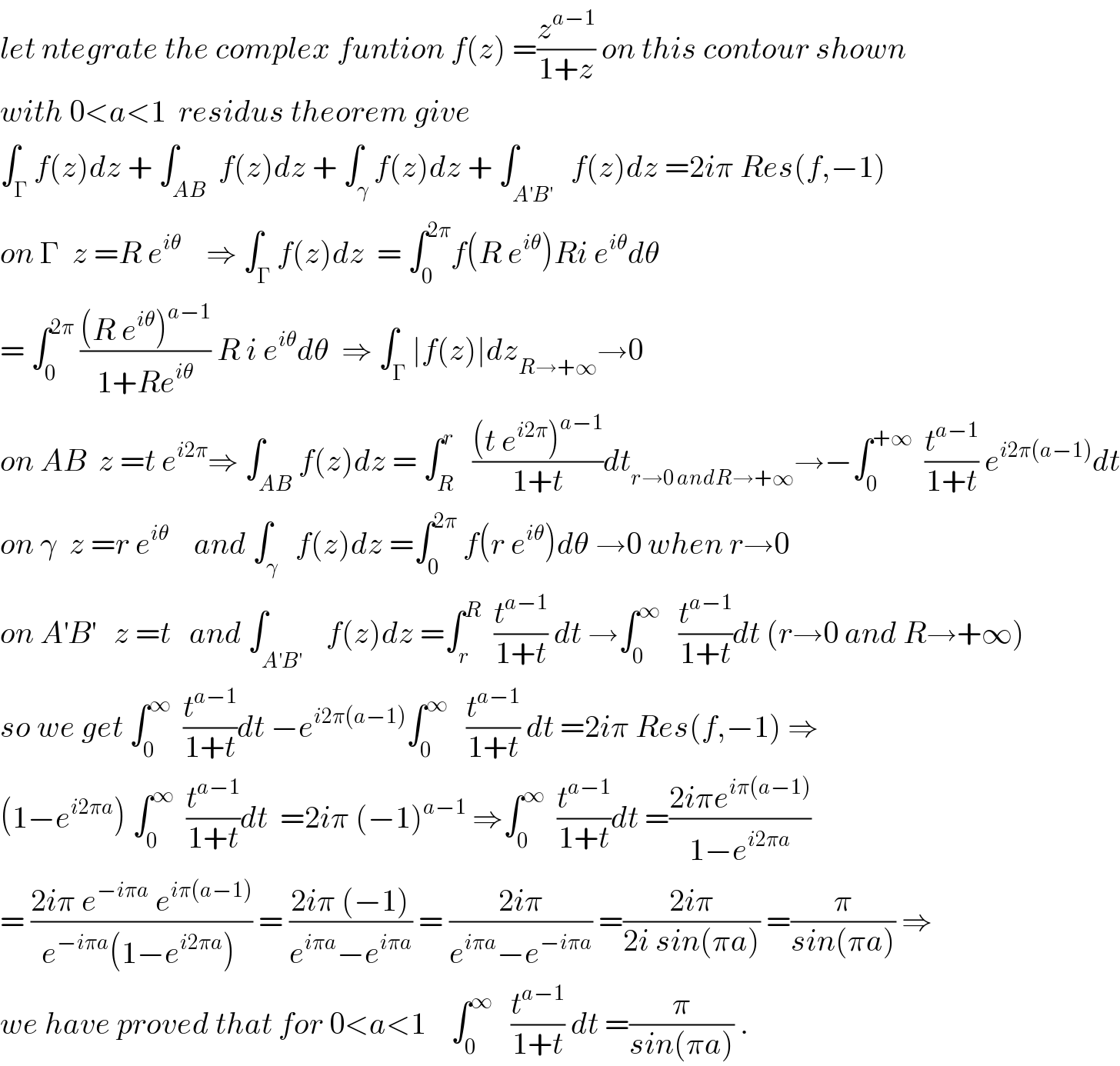Question Number 45075 by arvinddayama01@gmail.com last updated on 08/Oct/18

Commented by abdo.msup.com last updated on 08/Oct/18

Commented by maxmathsup by imad last updated on 08/Oct/18

Answered by tanmay.chaudhury50@gmail.com last updated on 08/Oct/18

Commented by arvinddayama01@gmail.com last updated on 09/Oct/18

Commented by tanmay.chaudhury50@gmail.com last updated on 09/Oct/18

